

Next-level P&C Insurance Underwriting
Purpose-built AI to enhance efficency, accuracy, and transparency.

Why MGAs & carriers around the globe choose Sixfold
Zoom in on your best risks
Speeds up intake, helping underwriters focus on submissions that match the insurer's risk appetite.
Consistent UW decisions
Every submission is assessed with the same criteria, making underwriting decisions more precise and consistent.
50% faster risk reviews
Cuts down manual work by instantly gathering and presenting key risk insights, accelerating the risk assessment process.

Captures and applies your unique risk appetite
Securely ingests underwriting guidelines to understand risk preferences
Applies your underwriting rules at scale with full traceability
Easily iterate risk appetite as business needs change

Increase capacity via augmented underwriting
Increases capacity through intelligent submission routing & triaging
Generates risk scores based on alignment with risk appetite
Assign SIC and NAICS codes automatically with full sourcing

Automatically surface what matters most
Automatically surfaces relevant risk factors
Generates plain-language and contextual summaries
Ingests data from disparate sources (applicant data, third-party, and proprietary)



Your compliance
team ❤️ Sixfold
Hallucination controls: Real data, trusted results.
Data privacy: Your data is your data, we help you keep it that way.
Full traceability: Our AI models fully source findings and conclusions.


Curious to explore some more?
%20(1500%20x%201000%20px)%20(680%20x%20520%20px).png)
2024 Reel: Sixfold’s Biggest Product Wins And How We Built Them
To close out the year, we sat down with our engineering and product teams for a behind-the-scenes look at what we’ve built. The result? 9 key product achievements.
In case you’re new here, we’ll start by reintroducing ourselves. Sixfold is the first purpose-built AI for insurance underwriting, designed to help insurance underwriters reduce their manual workload. We work with global and innovative insurance carriers like AXIS, Zurich Insurance Group, and Generali.
This year has been full of milestones—we’ve processed over 150,000 submissions, responded to more than 250,000 custom underwriting queries, and gathered 3,200+ hours of underwriter feedback.
So, how did we get here? We sat down with our engineering and product teams to give you an inside look at what we built, how we did it, and the technology behind it all.
The result? Nine of our top product achievements this year, picked by the folks who built them from the ground up, all focused on improving accuracy, efficiency, and transparency for underwriters around the world.
1. Improved Accuracy through Advanced Data Extraction & Risk Matching

What is it? 💡
Accuracy is one of the key elements at Sixfold and this time we’ve improved our models to deliver:
- Better data extraction from complex insurance documents
- Faster and more accurate matching of insurer risk appetites to key signals within cases
How did we build this? ⚙️
Our AI team focused on these key areas:
- Addressing variability in LLM responses
- Developing accuracy metrics and ensuring targeted output
- Quantitative testing for basic accuracy
“Working with LLMs is unique because they don’t always give the same answer to the same question. To handle that variability, we created metrics to assess how well we extract the necessary information, the precision of our responses, and our performance on key tasks."
- Ian Cook, Head of AI
What’s the impact? 🚀
Boosting accuracy for underwriters is one of our core missions. With our latest models, we’ve seen a 40% improvement in data extraction accuracy compared to six months ago — even from the most difficult-to-read documents.
“General methods to pull text from a PDF don’t go far enough to meet the rigor we demand. By focusing on the specific documents and information underwriters need, we deliver a more targeted, efficient system than off-the-shelf data extraction services.”
- Ian Cook, Head of AI
2. Transparency in One Click Through
In-line Citations
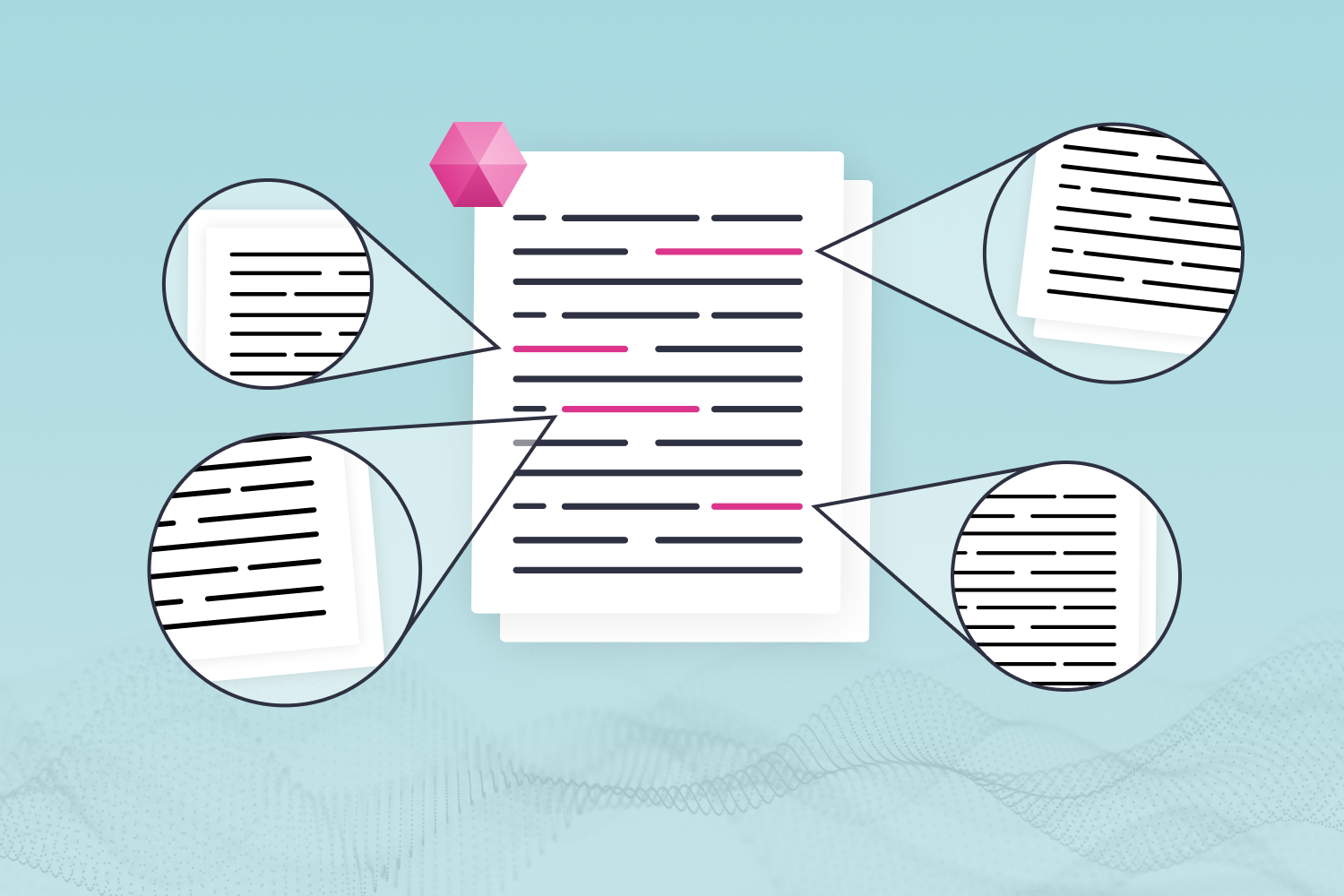
What is it? 💡
With this feature, underwriters can find the source of any information Sixfold is showcasing –with just one click. It’ll show which documents and websites the facts came from. Need to know the exact page? No problem we got you!
In-line citations don’t just build trust in our platform; they also give underwriters context on certain risks and provide full traceability for every piece of risk analysis.
“One of the most important things for an underwriter is not only seeing the pertinent risk signals or questionnaire responses we surface as part of the Sixfold risk analysis but also being able to dig deeper or understand the broader concept behind that information.”
- Lana Jovanovic , Head of Product
How did we build this? ⚙️
In simple terms, we associate each extracted fact with a page number to surface the most relevant information. So, what was the underwriting need behind this development?
- Building trust and confidence in the results
- To quickly locate information without having to read through many documents
“Certain information surfaced as part of that analysis may even trigger additional add-on questions or thoughts that they may have about it, so they can really rapidly be able to dig in further”
- Lana Jovanovic, Head of Product
What’s the impact? 🚀
We’re bringing transparency, speed, and confidence for underwriters—making it that much easier to make informed decisions.
3. Quicker Decisions With Reduced Case Processing Time

What is it? 💡
With our commitment to making underwriters' lives easier, this improvement was an absolute must! Our engineers rolled up their sleeves and worked hard to bring our case processing time down by 61%!
So, what happens during that processing time? Sixfold analyzes aggregated information, searches the web for publicly available information company data, and decides the right NAICS/SIC code classification.
How did we build this? ⚙️
“It started by reviewing our analysis pipeline step-by-step. We measured the processing time and the size of the data payload for each step of our pipeline to see where we could identify any bottlenecks.”
- Ian Hirschfeld, Senior Engineering Manager
Here are the steps we took:
- Broke large data processing tasks into smaller and faster units that could run concurrently
- Reconfigured the pipeline to allow multiple analysis steps to run in parallel
What’s the impact? 🚀
A 61% reduction in processing time—and hopefully, a lot more happy underwriters!
4. Closer Alignment With Your Risk Appetite Through Weighted Risk Signals
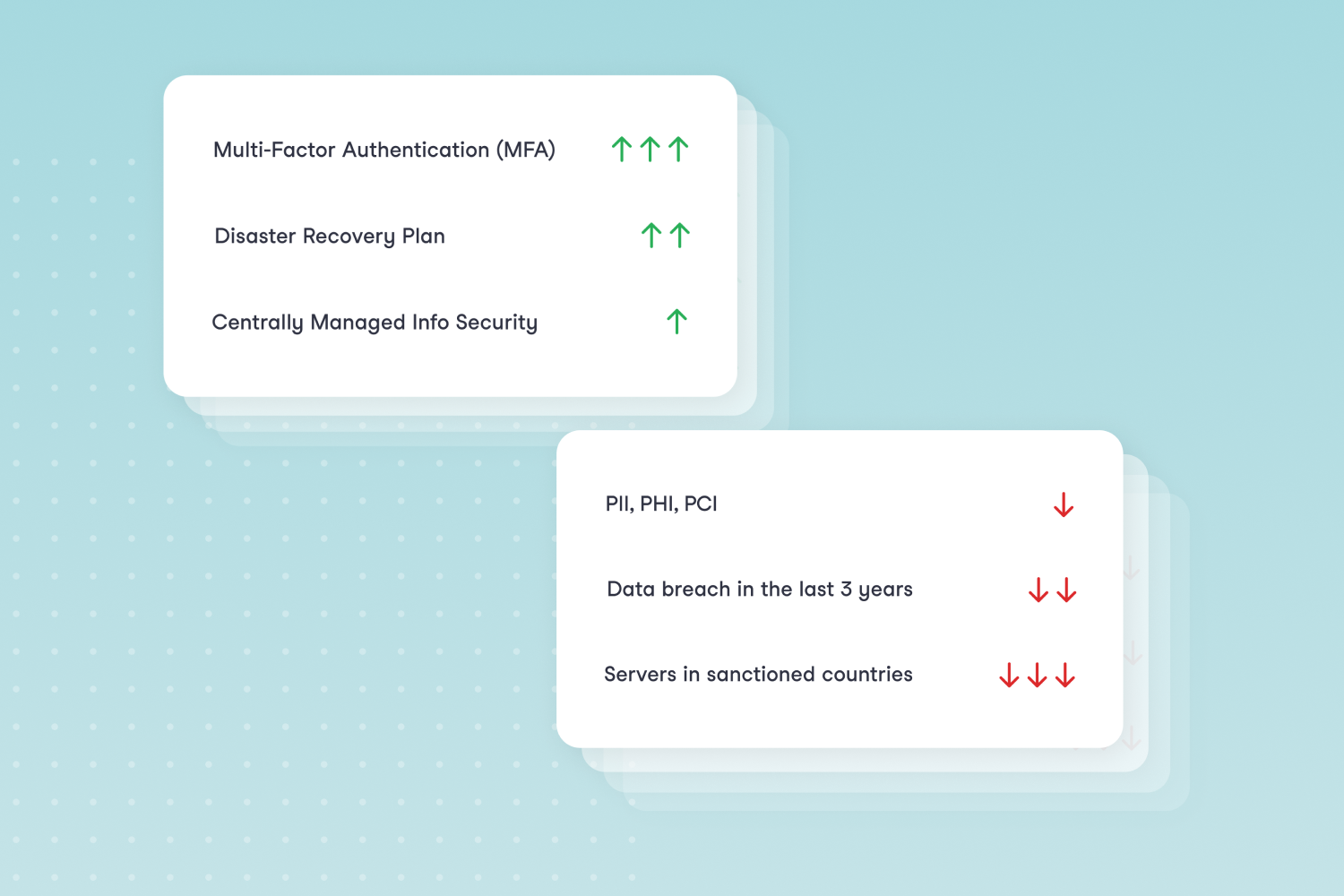
What is it? 💡
This feature will show underwriters all the risk criteria they’ve defined as important and classify those risks as either positive, really positive, negative, or really negative. And yes, the weighted risk signals are tailored to each customer’s unique risk guidelines and definitions.
For example, a cyber company might consider it a “really positive” signal if a prospect has implemented a Multi-Factor Authentication (MFA) process, while not having a backup in place might be something really negative.
How did we build this? ⚙️
Our product team envisioned this feature as something that could easily adapt to each carrier’s unique needs and got close support from our Lloyd's mentors during our 10-week Lloyd’s Lab Program, to refine and improve this feature.
Some of the core elements to figure out when building this feature included:
- Creating a scoring model that’s detailed enough to handle different signals without becoming too complex
- Balancing positive, negative, and neutral signals to accurately reflect real-world underwriting decisions
- Making sure the system could adapt smoothly to each carrier’s existing workflows
Because every carrier and industry interprets risk signals differently, we needed a solution that was both flexible and adaptable.
“The biggest challenge in designing this feature was addressing the diverse UW guidelines across various sectors.”
- Leonardo Momente, Senior Software Engineer
What’s the impact? 🚀
This feature is a great improvement in accuracy in appetite match scoring. This not only saves time but also improves underwriting precision.
“Frequent iteration and testing allowed us to refine the scoring criteria and user interface based on user feedback, ensuring the system was both effective and intuitive.”
- Leonardo Momente, Senior Software Engineer
5. Reliable Evaluations Thanks to Detailed Medical & Lifestyle Insights
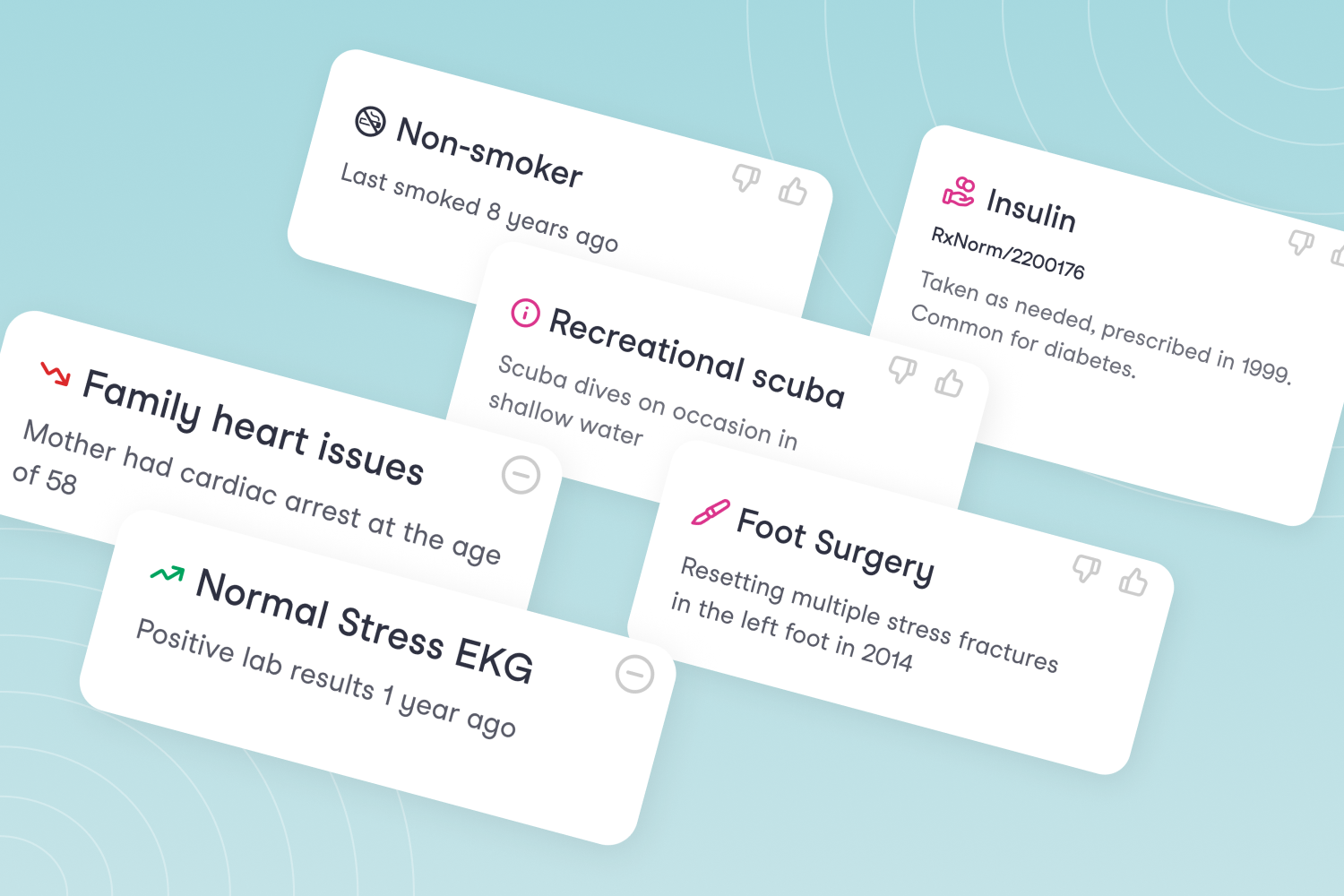
What is it? 💡
Life and disability underwriters have to go through hundreds of pages of medical documents, alongside lifestyle details, hobbies, and family medical histories. Sounds like a lot, right? Some might even compare it to detective work.
With our Life and Disability customers in mind, our product and engineering team built the Lifestyle & Medical History Analysis from scratch. This feature analyzes all the documents provided for a case and brings back a summary of all relevant risk information, helping underwriters quote cases more efficiently and quickly.
Sixfold takes care of the heavy lifting so that underwriters can focus on decision-making and relationship-building!
How did we build this? ⚙️
This feature was designed in different phases:
- Sixfold ingests all the documents underwriters upload for a particular case, extracting the relevant text from each file
- We analyze both the structured and unstructured data extracted, summarizing key information for the underwriter
- To make it even easier, we provide a chronological narrative of each case or condition
But, that’s not all! We also flag specific conditions predefined by the carrier and deduplicate repetitive information.
“One challenge was the fact that these medical histories can have a lot of repetitive information. For example, the history of a diagnosis or condition can appear many times across different types of documents.”
- Omeed Fallahi, Software Engineer
What’s the impact? 🚀
This feature dramatically reduces the manual work for underwriters, cutting down processing time for each case.
“You might have a negative risk signal for diabetes, for example. What the AI can do is identify a medication for diabetes that doesn’t explicitly mention the word ‘diabetes’ and flag it as a risk signal. This means the underwriter doesn’t have to constantly check what each medication is and what it treats.”
– Drew Das, Senior AI Engineer
6. Robust Security Through SOC2 Type II Certification + HIPAA Compliance
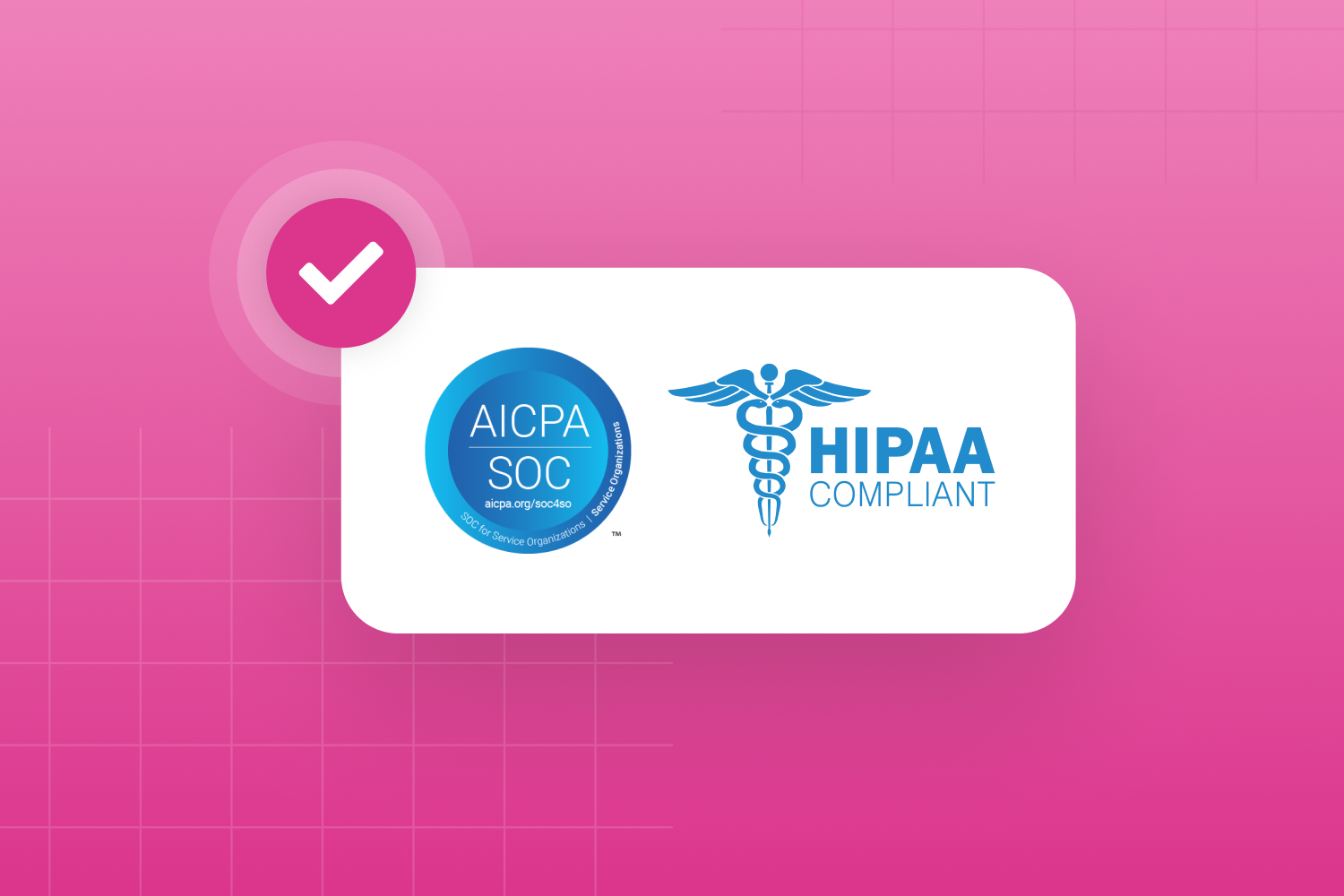
What is it? 💡
Our main goal is to make underwriters' lives easier – that’s at the core of everything we do – making sure our platform plays a huge part in that.
So, what does it mean for Sixfold to be SOC 2 compliant? This means that a neutral, expert third party has evaluated our platform to confirm we meet strict security controls, data protection, and availability standards. With SOC 2, we’ve gone the extra mile to prove these controls work consistently and effectively over time.
And what about HIPAA? HIPAA protects patient health information (PHI), and being HIPAA compliant means we’ve passed an audit confirming that our platform meets the privacy and security requirements needed to serve the life insurance industry.
How did we build this? ⚙️
Over several months, our engineering team addressed a series of steps to align with these regulations:
- Implementing strong access controls, user authentication, and data encryption
- Creating detailed incident response and disaster recovery plans
- Setting up continuous security monitoring, logging, and comprehensive documentation
"Team coordination and implementation proved to be a challenge. We needed to ensure all staff members were properly trained and fully understood our security protocols and compliance requirements. "
- Ryan Garver, Staff Software Engineer
What’s the impact? 🚀
By meeting these standards, we’ve put ourselves in a stronger position to help our customers meet their compliance needs in the insurance industry. It’s all about making Sixfold a trusted, reliable partner for carriers.
“For our platform, SOC 2 Type II and HIPAA compliance are fundamental business necessities, not just regulatory requirements”
- Ryan Garver, Staff Software Engineer
7. Establishing a Responsible AI Framework
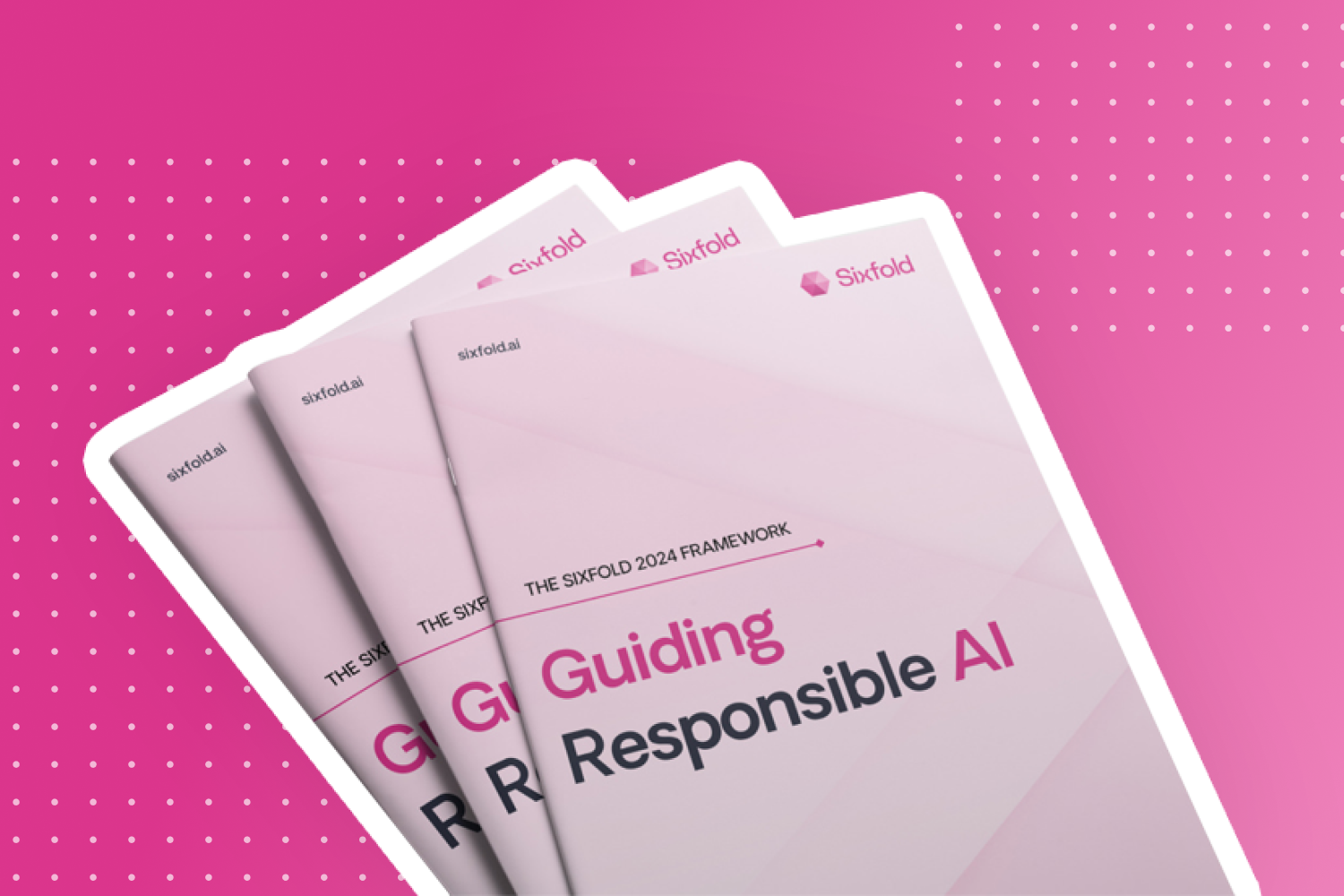
What is it? 💡
We love helping underwriters improve their quoting process with AI—that’s our main goal—but we also want to do it in a responsible way and set the benchmark for Responsible AI. With that in mind, we created our Responsible AI Report.
The report gives an overview of Sixfold’s approach to safe AI usage and answers common questions about the topic.
With Sixfold, you can have peace of mind knowing that your data is:
- Never stored or used for training our base model
- Isolated and separated from others
- Locked up tight for ultimate security
How did we build this? ⚙️
Our AI team is constantly working on:
1. Evaluating and re-evaluating our workflows and pipelines
2. Reviewing data that enters our system and assessing it for appropriateness and consistency to ensure it aligns with our Responsible AI principles
3. Refining code, LLM-based interactions, and data governance to ensure no protected class information is inserted or surfaced
“While we always want to make sure we’re aligned with the latest research on Responsible AI, the principles themselves don’t change as often as the tools. Our focus is on applying those principles every time we evaluate new tools and techniques.”
— Ian Cook, Head of AI
What’s the impact? 🚀
The Responsible AI Report reinforces our security standards and compliance commitments, building trust with our customers.
“As someone once said, focus is choosing what not to do. The framework helps us keep focus by making it clear what we should not be doing.”
— Ian Cook, Head of AI
8. Boosting Speed and Accuracy with Fewer Tabs via API
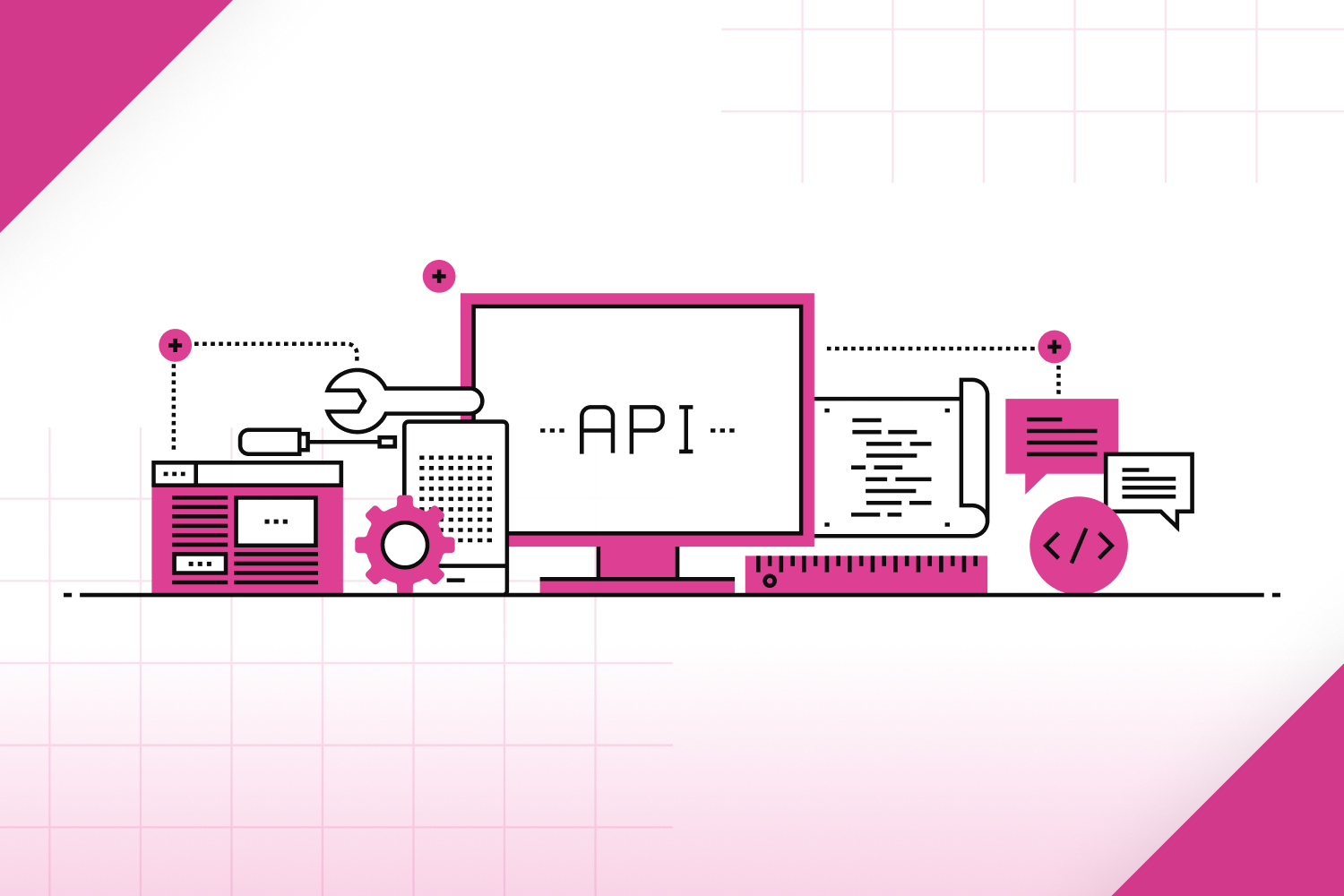
What is it? 💡
You may not even notice, but you’re probably using APIs – Application Programming Interfaces –every day. An API allows different software to communicate while keeping the user on the same interface they’re familiar with. Think about online shopping—you don’t need to leave the site to process your payment through the credit card company, right? That’s an API working behind the scenes!
For Sixfold, launching our API was a big step because it brings simplicity and efficiency to underwriters using our system. Underwriting teams often work across multiple platforms during the quoting process, so we made it easy for our customers’ tech teams to integrate Sixfold’s AI capabilities directly into the tools they’re already using.
How did we build this? ⚙️
Our engineering team focused on:
- Identifying the most critical information to expose through the API and how this information might differ from what is presented in the Sixfold Web UI
- Highlighting the most relevant data, supported by auditable sources
- Minimizing exposure to behind-the-scenes complexity
What’s the impact? 🚀
Sixfold’s API makes it easier for our customers to process a high volume of cases daily.
“One of our customers submits approximately 1,000 cases per day, with an average processing time of 31 seconds per case.”
- Ian Hirschfeld, Senior Engineering Manager
9. Streamlining Workflow Efficiency with SSO Integration
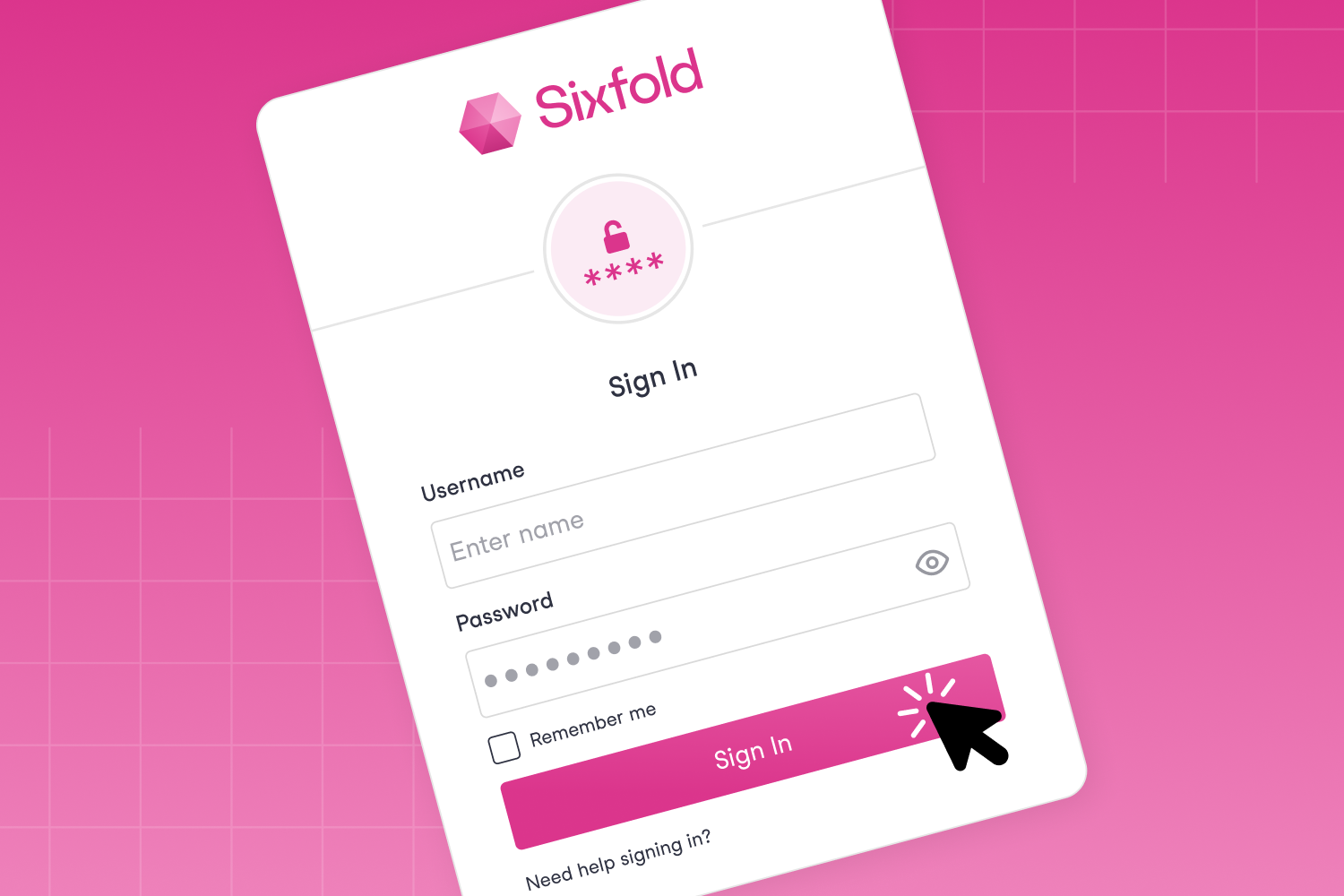
What is it? 💡
Yes, SSO stands for Single Sign-On. But what does that actually mean? We like to think of it as a way to simplify the way users log into applications.
For our customers, that basically means using their corporate email address to securely access Sixfold’s platform. And trust us, implementing SSO isn’t easy—there are plenty of security considerations, and the first thing that comes to mind is compliance!
How did we build this? ⚙️
This feature was a top request from our customers and with a diverse client base, our platform team had a lot of boxes to check:
- Different configurations across different clients
- Which Identity Provider do they use? Microsoft Azure or PingFederate, for example?
- How does user authentication happen—and how do we map users correctly?
“If you have a team of different underwriters, maybe they have different permissions—maybe they can see one case that fits certain criteria but not another.
And when new underwriters join, you want them seamlessly authenticated and authorized the same way as your existing underwriters.”
- Mike Rooney, Principal Software Engineer
What’s the impact? 🚀
No more handling a bunch of passwords! SSO is simply a better way to log in, reducing the chance of leaked credentials.
“Very soon, we’ll just be able to send a link to new customers who want to set up SSO with us. They can go through a detailed onboarding guide at their own pace. Once they’re done and happy with the setup, it turns green on our dashboard and we’re good to go.”
– Mike Rooney, Principal Software Engineer
That’s a 2024 Wrap
Looking back at these product developments and improvements, a few key themes stand out— efficiency, accuracy, and transparency. These are the key elements Sixfold is committed to bringing to underwriters every step of the risk assessment process.
Want to see how we’re making a difference in underwriting today? Check out how AXIS reduced submission time from 30 minutes to just 60 seconds, and how Zurich’s underwriters saved an average of 90 minutes per submission.
Thanks for sticking with us until the end of this post, and we’ll see you in the next one!
.png)
AI Built for Cyber Insurance
Carriers are increasingly turning to new classes of tech-forward solutions to accelerate review cycles, slash data processing costs, and navigate a risk landscape that changes ludicrously fast.
If cybercrime were measured in terms of GDP, it’d be the world’s third richest nation, eclipsing the economies of Japan, Germany, and India. With earnings measured in escalating $trillions, this growth “industry” shows no sign of slowing—or stagnating. Cybercriminals are quick to take advantage of emerging tech, and cyber insurers must also innovate to keep pace.
Carriers are increasingly turning to new classes of tech-forward solutions to accelerate review cycles, slash data processing costs, and navigate a risk landscape that changes ludicrously fast. In this post, I’ll outline how Sixfold’s AI risk assessment helps insurers grab their part of the industry’s fastest-growing segment.
Cyber risk analysis at scale
Sixfold provides underwriters with an efficient alternative to traditional workflows that are often time reliant on paper workflows and human intermediation.
Sixfold taps proprietary AI to build a virtual model of each carrier’s unique risk appetite by ingesting existing underwriting guidelines (be they in the form of an official handbook, a loose assortment of PDFs, or even just historic underwriting decisions), which can then be easily scaled out to the entire org.
Crucially to cyber, these digital guidelines can be iterated centrally and disseminated instantly to accommodate new risks such as a freshly unearthed CVE or emerging malware threat. Building digital underwriting models could take weeks or even months using traditional techniques, but with Sixfold, it can be completed in hours. This is our platform’s superpower, but it’s not the only way we’re making cyber work.
Accelerated review cycles
.png)
Cyber underwriters are under pressure to expedite case reviews to meet skyrocketing demand but data shows they’ve been challenged to keep pace.
A recent survey found that companies saying it took more than six months to get cyber coverage increased by more than 7X (!) between 2022 and 2023. Demand bottlenecks are one part of the problem, but a more fundamental issue is at play: cyber coverage applications are painfully inefficient.
Traditional methods often rely on underwriters manually reviewing data from IT questionnaires and additional submitted materials. This process requires underwriters to have a deep understanding of the cyber landscape and evolving threats. Sixfold changes this by automating the collection and unification of relevant information, streamlining the review process. The platform efficiently ingests both structured and unstructured data from various sources—third-party databases, public information, automated domain scans, cyber questionnaires, and more—delivering the essential insights cyber underwriters need to make informed decisions such as:
- NAICS or SIC code classification with industry-leading accuracy level.
- Operational business overview such as business description, revenue, and location.
- In-depth security insights customized to highlight the data each carrier identifies as critical—whether it's past cyber incidents or key practices like MFA or encryption. By aligning with their underwriting guidelines, these insights ensure recommendations match the carrier’s risk appetite.
- Additional third party insights from proprietary data sources
Once the data is gathered and processed, the platform surfaces risk appetite-aligned signals and presents them to underwriters via clear, short summarizations (e.g. “This company does not use MFA for employees” or “Company does employ a Chief Information Security Officer.”) along with data sources, down to the exact page number, for underwriters to always know where the information is coming from. Sixfold basically provides every underwriter with their own personal, virtual team of researchers, analysts, and writers who know precisely what info is needed to render a decision quickly.
Read more: Sixfold partners with Cybercube for unprecedented cyber data access
Sixfold reduced review times by more than 50%, and just as importantly, it allows underwriters to master the always-changing complexities of the cyber risk landscape, so they can confidently make the most reliably informed decisions.
Empower every underwriter with the latest cyber wisdom
.png)
The comparative newness of cyber has, until recently, been a barrier for many underwriters. Traditional lines like P&C and general liability have roots dating back to the 18th century along with well-established guidelines (e.g., property in flood zones costs more to insure), but cyber underwriters have little precedent to rely on (exactly what types of businesses are most vulnerable to phishing?)
What’s more? Cyber changes fast. Much faster than traditional underwriting infrastructures were designed to accommodate. Home insurers have the comparatively enviable task of adapting to decades-long trends like climate change, but cyber underwriters must contend with sudden, sharp disruptions due to some technological breakthrough that came out of left field—and new technological breakthroughs are always coming out of left field.
It’s asking a lot of underwriters to precisely understand the latest contours of the cyber risk landscape. With Sixfold, underwriters lean on the platform to spotlight the critical information they need so they can make more confident decisions, faster.
New markets deserve new tools
The cyber market is expected to grow from $14.8 billion this year to $90.6 billion next decade, but to build a sustainably profitable business in this fast-moving business, carriers will need a new set of underwriting tools.
Sixfold’s AI risk-assessment solution gives insurers the advantage they need to grow their cyber GWP and stand out in an increasingly competitive marketplace.
Want to see it in action? ➡️ Join our live product demo this Thursday, November 7th.
Disclaimer: Any references to specific companies throughout this blog post or in any images are for illustrative purposes only and do not represent real data or actual risk assessments
.png)
AXIS Adopts Sixfold’s Purpose-Built AI Solution
Sixfold, the AI solution designed to streamline end-to-end risk assessments for underwriters, announced its partnership with AXIS, a global leader in specialty insurance and reinsurance, a collaboration that has yielded positive results in its initial roll out.
October 18, 2024 - Sixfold, the AI solution designed to streamline end-to-end risk assessments for underwriters, announced its partnership with AXIS, a global leader in specialty insurance and reinsurance, a collaboration that has yielded positive results in its initial rollout. Within the first month of deployment, AXIS underwriters leveraged Sixfold’s solution to improve efficiency, accurately classifying businesses and aligning cases with their risk appetite.
“This partnership is all about leveraging AI to empower our underwriters and even further enhance the service we provide to our customers. We were searching for a solution that could reliably deliver precision, and Sixfold has done just that and more.
The real game-changer has been the time savings—freeing up valuable hours so our underwriters can zero in on the work that drives results while ultimately benefiting the customer” said Josh Fishkind, Head of Innovation at AXIS.
“Our goal is to provide meaningful ROI for all our customers, and AXIS has already begun to see these benefits,” said Alex Schmelkin, Sixfold's Founder & CEO. “We look forward to continuing our partnership as AXIS discovers more ways Sixfold can enhance their underwriting processes.”
Read the full customer story here and check out the Insurance Post article covering our work with AXIS.
Sixfold plays nicely with your existing underwriting tools.

